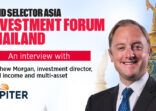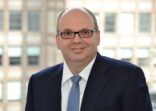Multi-asset funds still continue to draw investor interest even as two years ago asset managers had thought these products would be a short-term trend and investors would switch back to equities, highlighted Cerulli citing its interactions with the firms.
“It was widely believed previously that these funds appealed to investors for their ability to ride out market gyrations during periods of uncertain market conditions.
“But now, it seems that instead of the relative comfort levels that the funds’ asset allocation strategies bring, it is the stable monthly income features of these products that have investors hooked,” the report said.
In a low rate environment along with the uncertainties surrounding global markets, investors are increasingly seeking income-oriented solutions.
A recent survey by JP Morgan Asset Management in Singapore showed that the biggest shift in asset allocation was toward multi-asset funds. The top three considerations while investing in multi-asset funds were the yield of the fund followed by flexibility of asset allocation and volatility of the fund.
Multi-asset funds use dynamic asset allocation strategies which are intended to beat different market cycles, generate returns, and at the same time control downside risk.
“A multi-asset investment solution can provide investors with a degree of insulation from unexpected market events, while also potentially generating returns in excess of cash or even delivering a recurring income stream,” said Peter Warnes, head of the international portfolio solutions group at Manulife Asset Management, in a recent survey report.
Asset trends
According to Cerulli, the multi-asset “craze” has been limited to the more developed fund markets of Hong Kong and Singapore.
In Hong Kong, Cerulli estimates assets under management (AUM) of mixed asset funds were at $22.4bn in October 2014 compared to $7.7bn in 2012. This figure includes both traditional balanced funds and the more diversified multi-asset funds.
J.P. Morgan’s Multi Income Fund held the top spot with assets worth $4.6bn (on 30 November).
In Singapore, mixed asset funds accounted for 20.7% of total locally domiciled assets in September, up from a 14.3% share in 2012.
The assets of Schroders’ Singapore-domiciled Asia Asset Income Fund grew to $882.7m at the end November despite monthly net outflows for the first seven months of the year.
Tapping new markets?
Cerulli said asset managers have been trying to spread these products across new markets in Asia. Korea is one such market where foreign asset managers have been trying to push the product.
After a relatively successful run in 2013, demand tapered off, resulting in many funds seeing net outflows for 2014, Cerulli highlighted.
“Managers will face a challenge in selling multi-asset funds as Korean investors prefer local `value-investing’ and high dividend equity products.”
“Despite this setback, some managers are confident that demand for such funds will return in 2015. However, Korean investors are not drawn to monthly income features like their Hong Kong counterparts.”
















